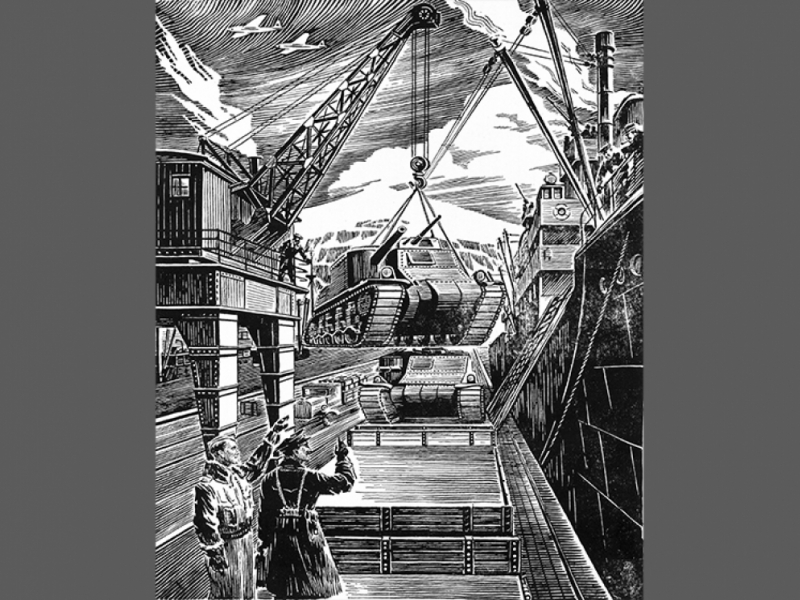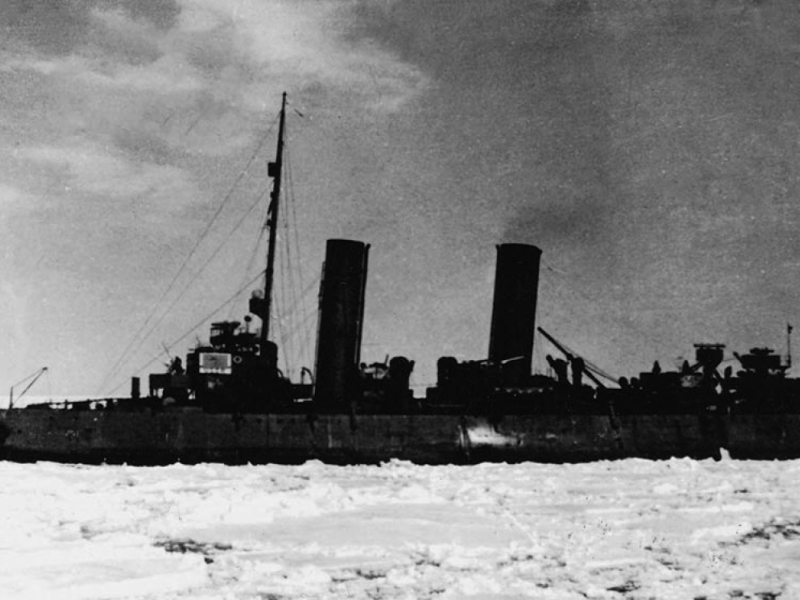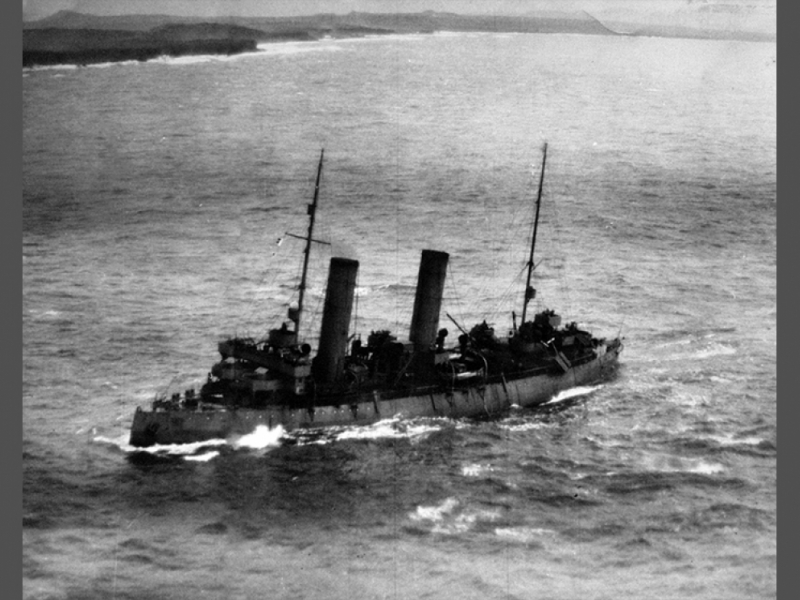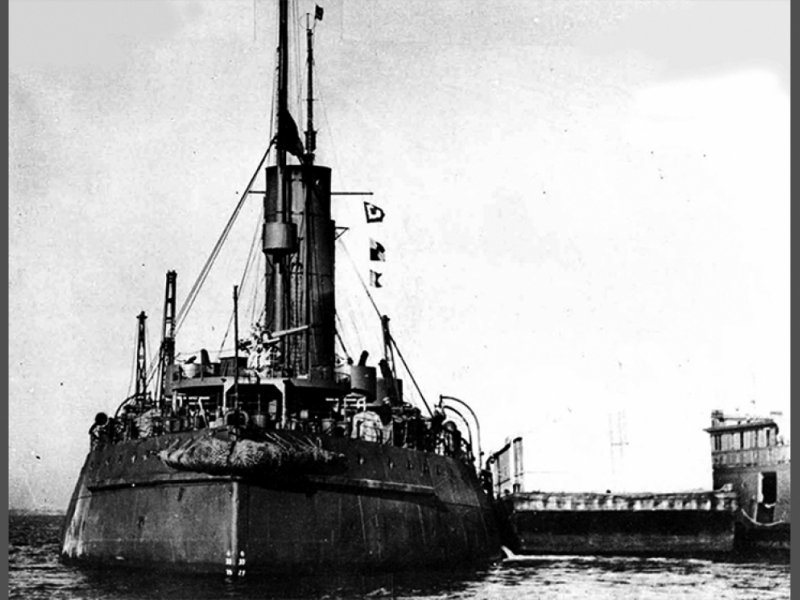In 1941 the Krasin was acquired by the United States, with a view to foiling any German attempts at invading Greenland. When no such attempt materialized Krasin returned to the Soviet Union, as part of the convoy PQ-15 from Reykjavik to Murmansk in April-May 1942.
She was armed with two 12-pound cannon, a 3-inch gun, seven 20 mm Oerlikon anti-aircraft guns, 6 Browning machine guns and small-calibre Hotchkiss machine guns -- for a total of 20 guns. In total there were 25 merchant vessels in the convoy, escorted by 20 escort vessels.
On 3 May 1942 the convoy was attacked by German aircraft which sank three ships at a cost of 5 planes. Two of the latter were shot down by Krasin's guns. One of them caught fire and its pilot tried to crash his machine into the Krasin in a kamikaze attempt. He had deliberately selected Krasin as a target, since icebreakers had become a target of choice, on orders from Reichmarschall Hermann Goering, head of the Luftwaffe, since they were seen to be indispensable to the Allied arctic convoys. Goering had promised a substantial reward to the pilot who managed to sink the icebreaker. In this case the attacking aircraft was shot down, hitting the water only 50 meters off the stern of the icebreaker. 16 members of Krasin's crew received awards for their performance during the convoy.












